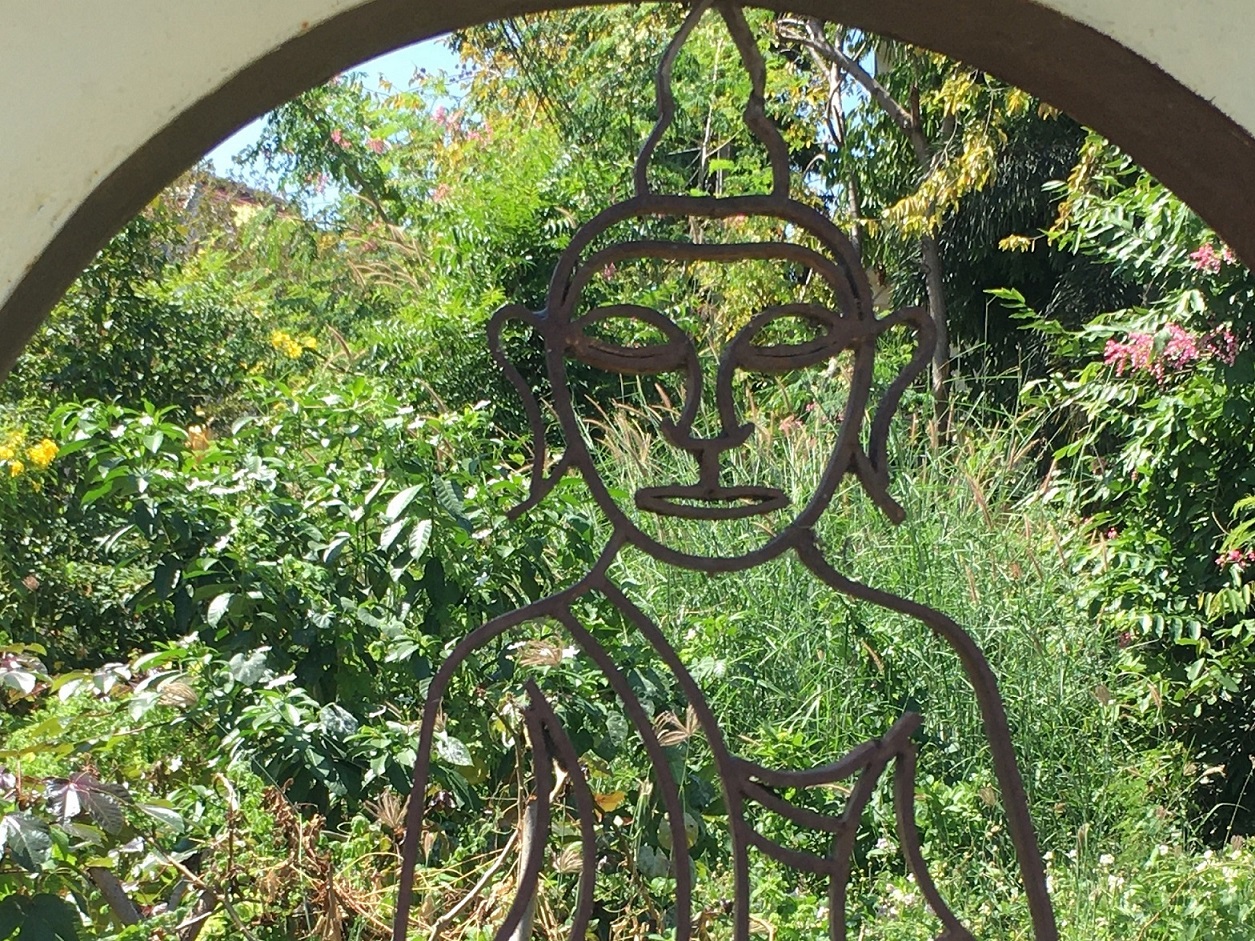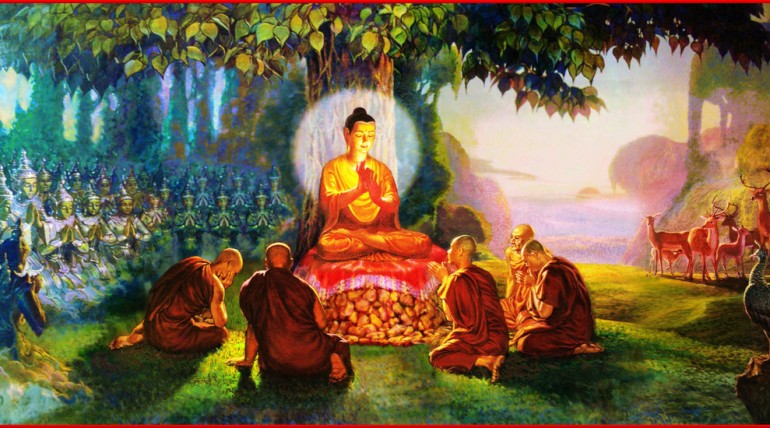Questions from participants to MC Brigitte during the retreat from 01 to 07 November 2022 at Sorn Thawee Meditation Center, Thailand. Part 1
What books should I read during a retreat?
MC Brigitte: During a retreat, you should read only books dealing with Buddhist teachings. However, it would be better to read only after a retreat because it is possible that what is read in the retreat can have a manipulative effect. You read what can happen in meditation and then wait for it during your meditation. In this way, pure experience is no longer possible.
What I can recommend is the book by my teacher Phra Acharn Thawee: “Practicing Insight on your own.” (www.meditationthailand.org) The book explains the whole process the mind goes through when practicing Vipassana.
Pariyati, patipatti, and pativedha
Buddha explained that there are three things we should do. The first is to study the theory of Buddhism (pariyati) as defined in the suttas. The second is putting the theory into practice (patipatti), and the third is realizing the knowledge (pativedha). Realization means realizing the knowledge we have acquired through books or teachers, along with practice.
On the one hand, if you read too much, you can lose the real experience because you are waiting to see how something you read about should be. On the other hand, for someone who just practices and doesn’t have theoretical knowledge or a teacher, it can also become problematic because you can take the wrong path.
Take a torch with you
You can compare this to the path from the meditation hall back to your room. You may step into a hole if it is dark and there is no light. Therefore, it is good to have a torch with you. Pariyati, knowledge, is like a torch. But you also must walk. That is patipatti, the meditation practice. Only when both are present will you directly reach your shelter without falling into a hole or stumbling.
The historical Buddha did not have a torch because he did not have a teacher or Buddhist teachings. Therefore, a Buddha or Bodhisattva must travel long to find the right direction. Prince Siddhartha left behind his luxurious life in the palace when he saw suffering. The Bodhisattva saw we all must experience birth, old age, illness, and death. He tried to find teachers, but all the teachers could only teach him what they knew then, and this was not enough to overcome suffering. His first teacher taught him the first four jhanas, absorptions. The next teacher taught him the higher levels of formless jhanas.
But Siddhartha realized that even after reaching the highest level of jhana, there is still suffering when you come out of the absorption. It is like putting a stone on the grass. As long as the stone is there, the grass does not grow in that place. However, if you remove the stone, the grass grows again. This is because the roots of greed, anger, and delusion are still there. Siddhartha realized this and left his teachers to find a way out of suffering.
He practiced severe austerity until one day, he heard the words of a music teacher who was teaching his students how to play the sitar properly: “If you pull the strings too tight, they will break. They won’t give a good sound if you let them too loose. You must stretch the strings the middle way to find the perfect sound so they are neither too loose nor tight.”
The Middle Way
Then Siddhartha realized that the middle way leads to the goal. Neither should one regard one’s body as an enemy nor should one lead a dissolute life of luxury. This explains a little bit how long the path is that a Buddha must walk for realization. A Bodhisattva has to go the wrong way until realization is attained.
We are fortunate to have Buddhist teachings and teachers who can teach us this middle way. We have a torch. That is why teachers are so important. With theoretical study alone, liberation is not possible. Practicing without theoretical knowledge can eventually lead us to enlightenment, but it will be a long road.
It would help if you also were careful about writing a diary because it can happen that after you have gained a few insights, you only write instead of practicing. The mind tends to always look for distractions. It wants to enjoy itself.
What can we do to increase our concentration?
MC Brigitte: There are two types of meditation practice. One is Samatha Meditation. This type of meditation focuses on one object. This can be breathing, a mantra, a kasina, or any other object. One concentrates only on this one object. All other things that come up during meditation are blocked out. This way, focus and concentration can become very strong, and one can reach different levels of jhana or absorption. Each level of jhana requires certain conditions. When one fulfills these conditions, one moves on to the next stage.
The other meditation practice is Vipassana, insight meditation, or bringing the mind back to the present moment. Most of the time, we use our breath for meditation. Initially, it’s about focusing on calming the mind. Once the mind is collected, we soften our focus and try to observe the most prominent object in the present moment. The concentration need not be as deep as in Samatha practice.
Right thinking
Vipassana uses knowledge and wisdom about impermanence, suffering, and the non-self nature of things. Vipassana allows the mind to think. But it should be “right thinking.” “Right thinking” is a part of the Noble Eightfold Path. Therefore, Vipassana means not only concentrating but also developing wisdom.
There is a beautiful image of the pond for this. When the wind blows, the surface of the water ripples, sand and mud are stirred up and mixed with the water. The water is no longer clear; seeing into the depths is no longer possible. It is the same with our mind: If there are too many thoughts, our mind is always in motion. Thoughts are like the wind that moves the water’s surface and stirs the mud. We cannot see into the depth of our minds but only see the waves of our thoughts.
Therefore, we must slow down or try to stop the thoughts. Then no wind will disturb the surface of our mind. Only then will we see what happens to our minds when wind turbulence appears? We begin to understand the nature of things better. With this kind of concentration, we can open up. It is as if we lift the stone from the grass to uproot the impurities underneath.
Emotions and Wisdom
Two things can arise citta and mano. One is the emotional part, which is expressed in desire and aversion. We like this, we want that, we don’t like that. The other part is wisdom: understanding where the emotion comes from. We use our knowledge of the present situation and learn to control the mind. Mano is stronger than emotions because wisdom is present. This sees the things that lead to suffering. This is what we are trying to develop with meditation. The understanding of the true nature. Emotions are there. They show up, but we don’t have to cling to them. We watch them arise, stay for a while, and pass away.
Being in the present moment
When we practice Vipassana, we try to be in the present moment. In the beginning, this is concentrating on walking or breathing. But with enough practice, we will let go of the meditation object to be entirely in the here and now.
We observe the most present object in the here and now. This can be seeing, hearing, or thinking. But this can also be sensations. We only register it, only take note of it. It doesn’t matter if it is an emotion like anger or contact with our eyes or ears. We note and register whatever is happening at the very moment. At some point, the impressions in mind will follow each other so quickly that it is no longer possible to perceive a specific object, but only the wide range of things that are just passing by. A constant change of coming and going, of arising and passing away. There is only Being the complete, true nature. At this stage of practice, we no longer choose an object.



